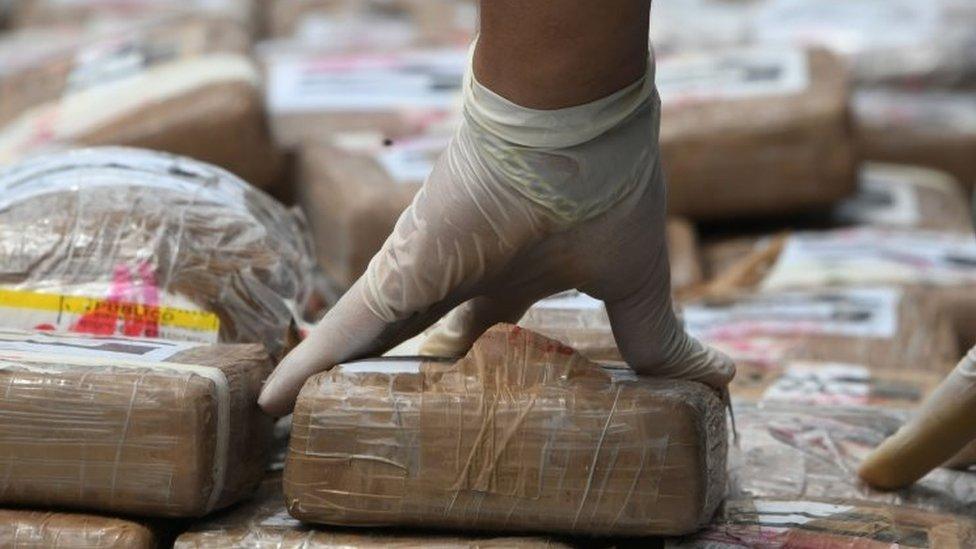Colombia coca cultivation rises by 50% says UN
- Published

The Colombian police increased their seizures of cocaine by 49 per cent says the report
The United Nations says there was a 50% increase last year in the area of land being used to cultivate coca leaf in Colombia.
The UN estimates that a third more cocaine was being produced in the country in 2016.
The head of the UN Office on Drugs and Crime, Bo Mathiasen, called the increase significant.
Analysts say much of it was due to the end of the eradication of coca crops by spraying.
The report said the total coca-growing area rose from 96,000 hectares in 2015 to 146,000 in 2016.
Mr Mathiasen said that he held out hope for a reduction in cultivation because Colombia had signed a peace agreement with the biggest rebel group in the country, the Farc, which controlled much of the drug-producing areas.
But local analysts argue that the rise was caused partly by a hiatus resulting from the government's peace deal with Farc rebels.
Under the deal, the Farc agreed to relinquish control over drug production areas and help the government try to encourage local farmers to plant substitute crops.
Farmers have taken advantage of the delays while the crop substitution policy is set up to plant coca, which has increased in price by almost 50%, because they know they will be offered subsidies later not to grow the plant.
Meanwhile, the Colombian government has increased by almost 50% its seizures of cocaine - from 253 tonnes confiscated in 2015 to 378 tonnes in 2016.
- Published28 January 2017
- Published4 February 2016